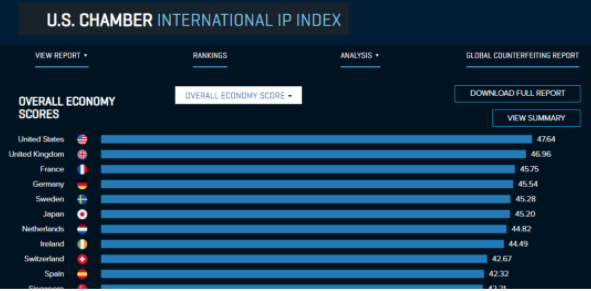In my previous article, entitled Do you own copyright when buying an NFT?, I explained how an NFT buyer receives the rights contained in the smart contract attached to the NFT. They have no rights to the original scent work.
However, rights are only as good as the laws and systems that protect them.
As we shall see, there is still a lot of work to be done in this area in the NFT space, meaning buyers and creators need to be aware of the risks.
Current Problems with NFT transactions
The largest NFT trading platform is OpenSea, which offers a wide range of work and, of course, relatively high fees. On the platform, artists can sell NFTs and buyers to buy them, with ownership of the NFTs transferring with the transfer of fees. Although NFTs cannot be sent back and forth like tokens, they can be listed on the trading platform and sold either at a fixed price, as a package, or at auction.
In many ways, NFT transactions are the same as e-commerce transactions, and similar issues arise on both.
- Money laundering
The current NFT trading platforms are mostly decentralized exchanges, on which transactions are anonymous and subject to the rules of the exchange of the platform. Since the value of NFTs is art products closely linked to virtual products, a person trying to launder money can easily inflate their value. At present, there are no anti-money laundering measures for minters and sellers of NFTs.
- Counterfeiting and piracy
In March 2021, the artist Weird Undead posted a painting that was stolen to create and sell an NFT. This incident sent a message to the public that not all NFT mapped works are original to the founders.
This has made people question the authenticity of NFTs (in terms of their ownership) on the platforms.
Can the authenticity, uniqueness, and scarcity of a minted NFT really be guaranteed when the work used to mint the NFT is itself pirated, non-copyrighted and unlicensed?
Buyers need to consider all of these questions.
Currently, there are no laws in any jurisdiction that specifically address NFT transactions, and there is considerable debate as to whether NFT is a right in rem. While some say foundry NFTs are entitled to intellectual property rights, others say [what?]. However, there is a consensus [among whom] that NFTs are proof of rights.
In light of the lack of NFT-specific laws, we can look at the protection of IPRs around the world and analyze whether traded NFTs might be protected.
The Current State of Intellectual Property Protection in the Asia-Pacific Region – The Case of China
The protection of intellectual property rights in China is mainly provided by the Civil Code of the People’s Republic of China, the Copyright Law of the People’s Republic of China, the Trademark Law of the People’s Republic of China.
A series of laws, such as the Copyright Law of the People’s Republic of China and the Trademark Law of the People’s Republic of China, provides protection for the concept of intellectual achievements in the form of expression.
The creation of content is for the intellectual achievement of which there is a carrier presented. That is, it enjoys the right to modify, reproduce, exhibit, distribute, disseminate on the information network, protect the integrity of the work, compile, and many other rights, collectively known as copyright. The protection of the aforementioned rights is for the life of the author and for 50 years after death, with the right to protection of the integrity of the work being unrestricted.
Therefore, if the creator of the original work creates an oil painting, he or she has the right of distribution and the right of information network dissemination for life and 50 years after death, provided that the copyright has not been transferred.
The right to reproduce refers to the right to make one or more copies of the work by printing, copying, topping, recording, videotaping, reproducing or digitizing; the right to disseminate the information network refers to the right to make the work available to the public by cable or wireless means so that the public can access the work at a time and place of their choice.
In this context, the making of the painting into NFT is in fact the making of one copy of the painting in digital form. If the foundry uploads the painting for NFT without authorization, this is an infringement of the creator’s right to reproduce If the NFT is then put up for sale. It is considered an infringement of the creator’s right to disseminate information on the internet.
Therefore, before the relevant law has made specific provisions on intellectual property infringement in the field of NFT technology, reference can be made to the existing legal provisions. However, NFTs are dependent on the underlying blockchain technology, and the combination of the public nature of the chain and the anonymity of the NFT trading market has made the protection of intellectual property rights in NFT a more difficult issue.
The current state of intellectual property protection in Europe and the United States – The United States as an example
The United States is a federal political system and a civil law system, with statutory law and case law. At the same time, the United States’ adherence to court precedents also plays a large role in the protection of intellectual property rights. According to the U.S. Department of Commerce’s 2020 International Intellectual Property Index, the U.S. ranks first in the world for the protection of intellectual property.
Data sources: International IP Index 2020 https://www.theglobalipcenter.com/ipindex2020-chart/
Protection of copyright in the US lasts for the life of the author, and when the author dies, the work/intellectual output of his or her authorship passes into public property. The duration of protection under US law is relatively short compared to France, China and Canada. However, the US is more aggressive against IPR infringement, providing for the dual principle of compensation plus damages.
Normative thinking on NFT transactions
It is true that the ERC721 standard has made NFT a better bearer of physical virtual mapping and has enabled the transformation of economic models. But it is also true that the NFT market has both advantages and disadvantages, so how should the disadvantages of the current NFT market (piracy and infringement) be addressed? How should NFT transactions be regulated and how should artists/content creators be protected?
In general, the development of technology precedes the law, and infringement of intellectual property rights in the field of NFT technology has not given rise to new forms of infringement but remains an infringement of rights such as the right to reproduce and the right to disseminate information over networks.
There is an urgent need for the law to keep up with the times to regulate NFT transactions. As parties to NFT transactions, they should also strengthen their awareness of the need to protect intellectual property rights.
Here’s what different parties involved in the NFT transactions can do to protect themselves:
- Content creators, i.e. authors of original works: When their works are stolen for the production of NFT, they can seek help from the platform by providing relevant supporting evidence. If forensics is achieved, it is recommended to claim the protection of rights from judicial authorities.
- Casters: Where the NFT is cast using their own work, it is advisable to obtain authorization, at least a grant of reproduction and information network distribution rights, if it is someone else’s work.
- Buyers: Purchased NFTs have only an interest in that NFT, and it is recommended that the source of the purchased NFT be confirmed.
- Platforms: Increase the verification of the source of the founders’ works, for example by explicitly providing it in the user agreement.
Summary
In the NFT market, which is mainly used in the field of digitized artworks/collectibles, legal risks and operational risks still exist due to money laundering, infringement of intellectual property rights, fraud, and theft.
The relevant regulatory policy is still in a relatively blank space, and the relevant rights and responsibilities for NFT are not very clear. In order to realize everything is mapped on the chain as NFT, a series of laws and regulations are needed as a guarantee.
As to whether there will be a new sectoral law based on NFT, let’s look forward to it together.
Disclaimer: The contents of this article represent the views of Footprint and are for information and reference only and do not constitute any investment advice.
Footprint Website: https://www.footprint.network
Discord: https://discord.gg/3HYaR6USM7
Twitter: https://twitter.com/Footprint_DeFi
Telegram: https://t.me/joinchat/4-ocuURAr2thODFh
What is Footprint
Footprint Analytics is an all-in-one analysis platform to visualize blockchain data and discover insights. It cleans and integrates on-chain data so users of any experience level can quickly start researching tokens, projects and protocols. With over a thousand dashboard templates plus a drag-and-drop interface, anyone can build their own customized charts in minutes. Uncover blockchain data and invest smarter with Footprint.









